Congress and the Trump administration are beginning to pull together the components of a fourth COVID-19 emergency supplemental. The first package included initial emergency funding to bolster foreign assistance programs. In the third package, while containing critical funding for the safety of our diplomatic and development workers, less than half of 1 percent of the total package goes to international funding, an insignificant amount given the unprecedented task facing our development partners to address the pandemic. The scale of the current crisis demands urgent action in the short term, but action to build resilience in global supply chains and health systems for the long term.
While domestic needs are paramount, the U.S. must also meet our international responsibilities. As legislation moves in the coming weeks, the congressional committees with international jurisdiction—House Foreign Affairs and Financial Services committees, Senate Foreign Relations Committee, House and Senate foreign operations appropriations subcommittees—need ways to quickly tap into the relevant expertise as to how best to deploy American financial and technical assets.
Virtual hearings
In normal times, this could be done under regular order—methodically through a series of hearings over months. We are not in normal times. Experts cannot get on planes to fly to Washington to serve as witnesses; members and witnesses cannot come together for formal public hearings. As Norm Ornstein and Thomas Mann argued after 9/11, it’s past time for Congress to use modern technology to be able to conduct business in times of emergency. This is a crisis and the Congress has the technology for committees to do their work.
A call from one of the committees, or several working together, for experts around the country, and internationally, to submit a two- to five-page statement outlining ideas for how the U.S. could best contribute to other countries’ efforts to confront COVID-19 would likely within 10 days produce hundreds of submissions and many good ideas. The committees individually, or better yet jointly, could hold digital formal hearings—or, if that remains outside the bounds of acceptable legislative practice, informal roundtables—to probe experts on the most relevant suggestions. The Supreme Court has just adopted this variance from normal procedures with hearing oral arguments virtually. The hearings should be open to the public so there is broad public engagement and education. In short order, this crowdsourcing would help the committees find multiple creative and constructive ideas as to how the U.S. can use its diplomatic and development resources to lead the effort to defeat this pandemic.
Learning from experience
Let us offer some ideas suggested by prior experience from the development community in addressing famines and previous pandemics. The coronavirus pandemic is clearly more disruptive than any international emergency we’ve seen in our lifetimes. But it’s not so novel that earlier crises don’t offer useful lessons as we plan for the future. President Eisenhower once observed that “plans are worthless, but planning is everything.” This critical insight suggests that now is the time to take seriously the many recommendations made over the past several years on how to do a better job of preparing the global system for future crises.
One idea flows from the likely outcome of the effort to ramp up production of personal protective equipment (PPE). After this capacity kicks in, at some point—when production meets declining cases of new infections and hospitalizations—supply in the U.S. will reach a saturation point.
What then? First, we ship PPE to countries lacking the equipment.
Second, we plan and prepare for the next health pandemic. In the past two decades, the world has experienced SARS, Ebola, H1N1, flu, various lesser infectious disease outbreaks, and now COVID-19. Does anyone think there will not be a successor in the next few years? The rational step would be to continue to produce the equipment and to warehouse it in strategic locations around the world, just as is done with basic food commodities so they are readily available in response to a pending famine.
This is not a novel idea. We do it for food to prevent or stem the outbreak of famine. We do it for vaccines to fight potential outbreaks such as cholera, meningitis, and yellow fever, supplies of which are stored at the manufacturer and administered through the International Coordinating Group for the Provision of Vaccines, housed at the critically important World Health Organization (WHO). Maybe not as agile as needed due to multiple overlords and straitened resources, a new reserve of PPE needs to be established with a strong political mandate that its deployment will be rapid and driven by the best scientific analysis and according to the best global practices in logistics and supply chain management.
Third, again learning from food security, the Famine Early Warning System Network (FEWS), created by the U.S. Agency for International Development in 1985, is credited with averting or stemming the impact of famine in Africa. The current system for addressing epidemic outbreaks, the Global Outbreak Alert and Response Network (GOARN), established in 2000 and coordinated by WHO, could be strengthened. In light of what we’ve already learned through the advent of the coronavirus pandemic, there’s an important opportunity to review, rationalize, and streamline the GOARN, and to ensure that it is adequately resourced for its indispensable task and given a clear political mandate that its analysis and actions will be driven by rigorous science and coupled with the political will and commitment to act in a timely way when the international community is next faced with a crisis of similar magnitude.
More comprehensive, longer-term agendas on global health security are available. The Global Health Security Agenda (GHSA)—established in the aftermath of the 2014-2015 Ebola outbreak in West Africa—is a consortium of 67 countries, international organizations, NGOs, and private sector companies that have come together to help make the world safer and more secure from the threat of infectious disease. The U.S. has been a leading member and should continue to engage, both to learn from the experience of other countries and to support collective efforts to address novel health security threats as they arise. Participation in the GHSA is a sound investment in making the U.S. both safer and more secure.
A compendium of ideas
There are a number of recent instructive analyses of how to prepare better for future pandemics, including the 2019 report of the Global Preparedness Monitoring Board, A World At Risk; the 2019 report from Johns Hopkins Center for Health Security, Preparedness for a High Impact Respiratory Pathogen Pandemic; and the 2019 report on Ending the Cycle of Crisis and Complacency in U.S. Global Health Security from the CSIS Commission on Strengthening America’s Health Security.
The question is not what to do, but whether we have the collective will to implement the recommendations of the health, security, and development experts so that we are better prepared and more resilient for the next pandemic that will inevitably come. As Peter Piot, co-discoverer of the Ebola virus and director of the London School of Hygiene and Tropical Medicine, recently observed: “You don’t set up a fire brigade when your house is already on fire.”
Congress can act now
Using modern technology, the Congress can catalyze a dialogue among experts sharing their best ideas while social distancing and draw on timely analyses and recommendations on pandemic preparedness. This will allow congressional committees within a few weeks to identify ways that the fourth supplemental can put the U.S., with its historic position as the global leader in responding to health and humanitarian needs, back in a caring and responsible leadership role.
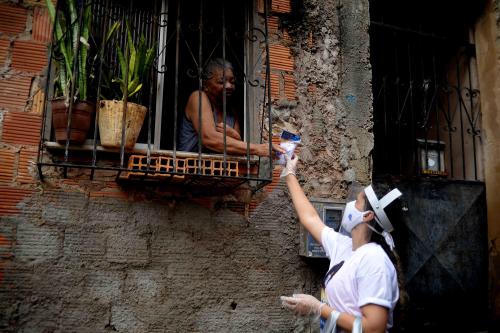
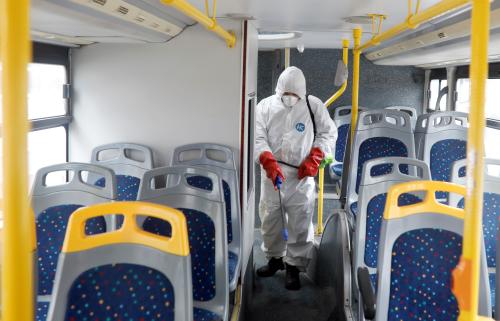
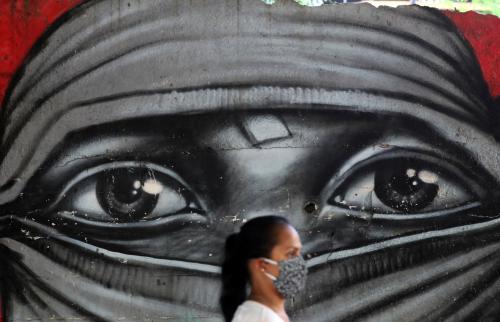


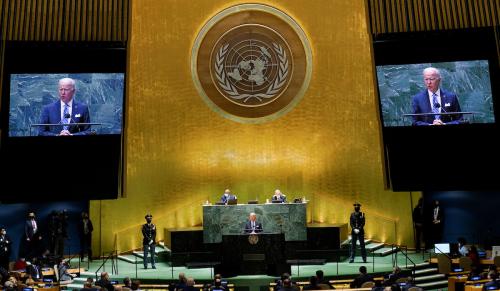
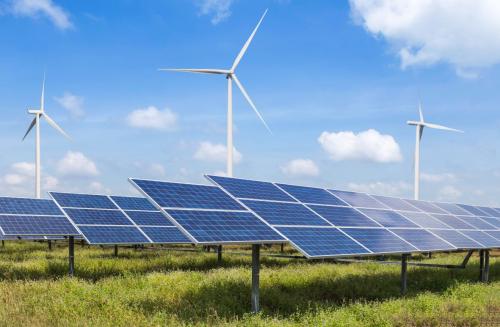
Commentary
How Congress can address the international dimensions of the COVID-19 response
April 15, 2020